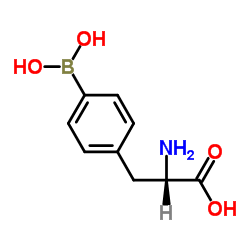Boron neutron capture therapy induces apoptosis of glioma cells through Bcl-2/Bax.
Peng Wang, Haining Zhen, Xinbiao Jiang, Wei Zhang, Xin Cheng, Geng Guo, Xinggang Mao, Xiang Zhang
文献索引:BMC Cancer 10 , 661, (2010)
全文:HTML全文
摘要
Boron neutron capture therapy (BNCT) is an alternative treatment modality for patients with glioma. The aim of this study was to determine whether induction of apoptosis contributes to the main therapeutic efficacy of BNCT and to compare the relative biological effect (RBE) of BNCT, γ-ray and reactor neutron irradiation.The neutron beam was obtained from the Xi'an Pulsed Reactor (XAPR) and γ-rays were obtained from [60Co] γ source of the Fourth Military Medical University (FMMU) in China. Human glioma cells (the U87, U251, and SHG44 cell lines) were irradiated by neutron beams at the XAPR or [60Co] γ-rays at the FMMU with different protocols: Group A included control nonirradiated cells; Group B included cells treated with 4 Gy of [60Co] γ-rays; Group C included cells treated with 8 Gy of [60Co] γ-rays; Group D included cells treated with 4 Gy BPA (p-borono-phenylalanine)-BNCT; Group E included cells treated with 8 Gy BPA-BNCT; Group F included cells irradiated in the reactor for the same treatment period as used for Group D; Group G included cells irradiated in the reactor for the same treatment period as used for Group E; Group H included cells irradiated with 4 Gy in the reactor; and Group I included cells irradiated with 8 Gy in the reactor. Cell survival was determined using the 3-(4,5-dimethylthiazol-2-yl-2,5-diphenyltetrazolium (MTT) cytotoxicity assay. The morphology of cells was detected by Hoechst33342 staining and transmission electron microscope (TEM). The apoptosis rate was detected by flow cytometer (FCM). The level of Bcl-2 and Bax protein was measured by western blot analysis.Proliferation of U87, U251, and SHG44 cells was much more strongly inhibited by BPA-BNCT than by irradiation with [60Co] γ-rays (P < 0.01). Nuclear condensation was determined using both a fluorescence technique and electron microscopy in all cell lines treated with BPA-BNCT. Furthermore, the cellular apoptotic rates in Group D and Group E treated with BPA-BNCT were significantly higher than those in Group B and Group C irradiated by [60Co] γ-rays (P < 0.01). The clonogenicity of glioma cells was reduced by BPA-BNCT compared with cells treated in the reactor (Group F, G, H, I), and with the control cells (P < 0.01). Upon BPA-BNCT treatment, the Bax level increased in glioma cells, whereas Bcl-2 expression decreased.Compared with γ-ray and reactor neutron irradiation, a higher RBE can be achieved upon treatment of glioma cells with BNCT. Glioma cell apoptosis induced by BNCT may be related to activation of Bax and downregulation of Bcl-2.
相关化合物
| 结构式 | 名称/CAS号 | 分子式 | 全部文献 |
|---|---|---|---|
 |
4-硼-L-苯基丙氨酸
CAS:76410-58-7 |
C9H12BNO4 |
|
Pharmacokinetic analysis and uptake of 18F-FBPA-Fr after ult...
2014-04-01 [J. Nucl. Med. 55(4) , 616-21, (2014)] |
|
Low dose of gamma irradiation enhanced boronophenylalanine u...
2011-12-01 [Appl. Radiat. Isot. 69(12) , 1728-31, (2011)] |
|
Studies for the application of boron neutron capture therapy...
2011-12-01 [Appl. Radiat. Isot. 69(12) , 1752-5, (2011)] |
|
Boron neutron capture therapy for clear cell sarcoma (CCS): ...
2011-12-01 [Appl. Radiat. Isot. 69(12) , 1721-4, (2011)] |
|
EORTC trial 11001: distribution of two 10B-compounds in pati...
2009-08-01 [J. Cell. Mol. Med. 13(8B) , 1653-65, (2009)] |